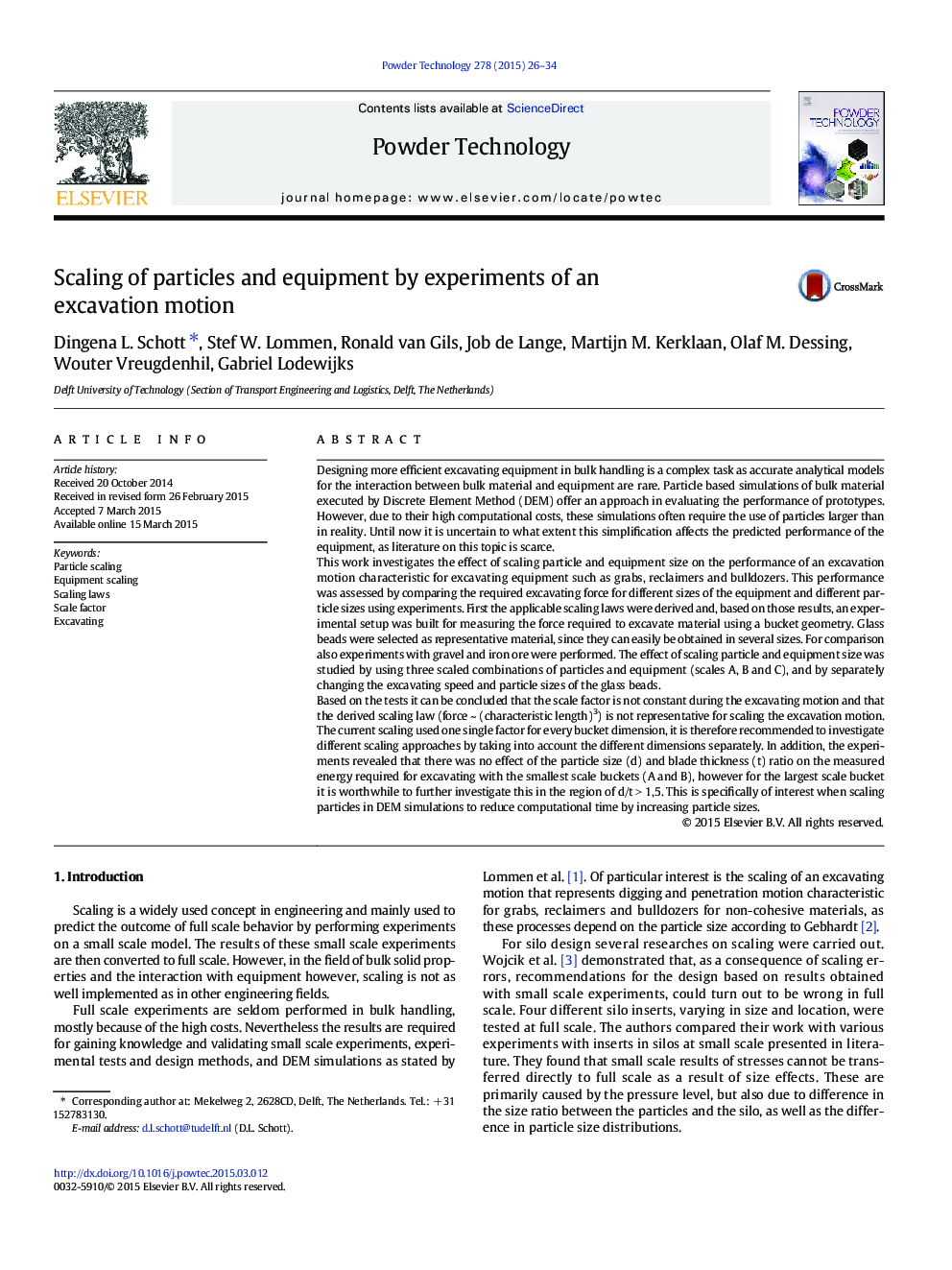| کد مقاله | کد نشریه | سال انتشار | مقاله انگلیسی | نسخه تمام متن |
|---|---|---|---|---|
| 235594 | 465642 | 2015 | 9 صفحه PDF | دانلود رایگان |
• An experimental setup of an excavation motion was built according to scaling laws.
• Experiments were carried out with different sizes of the bucket and particles.
• The scale factor varies during excavation where the penetration phase is distinctive.
• It is recommended to apply revised scaling taking separate dimensions into account.
• Effect of particle size and blade thickness ratio increases with larger buckets.
Designing more efficient excavating equipment in bulk handling is a complex task as accurate analytical models for the interaction between bulk material and equipment are rare. Particle based simulations of bulk material executed by Discrete Element Method (DEM) offer an approach in evaluating the performance of prototypes. However, due to their high computational costs, these simulations often require the use of particles larger than in reality. Until now it is uncertain to what extent this simplification affects the predicted performance of the equipment, as literature on this topic is scarce.This work investigates the effect of scaling particle and equipment size on the performance of an excavation motion characteristic for excavating equipment such as grabs, reclaimers and bulldozers. This performance was assessed by comparing the required excavating force for different sizes of the equipment and different particle sizes using experiments. First the applicable scaling laws were derived and, based on those results, an experimental setup was built for measuring the force required to excavate material using a bucket geometry. Glass beads were selected as representative material, since they can easily be obtained in several sizes. For comparison also experiments with gravel and iron ore were performed. The effect of scaling particle and equipment size was studied by using three scaled combinations of particles and equipment (scales A, B and C), and by separately changing the excavating speed and particle sizes of the glass beads.Based on the tests it can be concluded that the scale factor is not constant during the excavating motion and that the derived scaling law (force ~ (characteristic length)3) is not representative for scaling the excavation motion. The current scaling used one single factor for every bucket dimension, it is therefore recommended to investigate different scaling approaches by taking into account the different dimensions separately. In addition, the experiments revealed that there was no effect of the particle size (d) and blade thickness (t) ratio on the measured energy required for excavating with the smallest scale buckets (A and B), however for the largest scale bucket it is worthwhile to further investigate this in the region of d/t > 1,5. This is specifically of interest when scaling particles in DEM simulations to reduce computational time by increasing particle sizes.
Figure optionsDownload as PowerPoint slide
Journal: Powder Technology - Volume 278, July 2015, Pages 26–34
